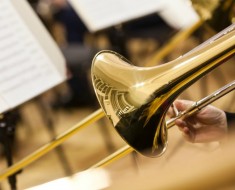Although of Swiss parentage, Gerhard was born in Tarragona and saw himself as a Catelonian composer. He studied with Pedrell (celebrated in his work ‘Homage to Pedrell’) and Granados in Barcelona and later with Schoenberg in Vienna, where he was greatly influenced by the then new 12-note system of composing. I have been aware of him from my youngest days and recall the interest aroused by his Spanish-flavoured opera ‘The Duenna’ (1950) and his Concerto for Orchestra (1965). He was one of many artists who left Spain during the civil war, moving to England and settling in Cambridge which became his home. He also had connections in the U.S.A., his fourth symphony being commissioned by New York. During his life his music was played quite often, in company with other contemporary composers of his time. He belongs to our articles and is a sort of bridge between two cultures. Although he retained his Spanish roots, he became a valued part of the English musical scene.
Meirion Bowen and Stephen Kristian have devoted a website produced with the assistance of the Gerhard Estate and give interesting biographical information about his life and his works.
Divided into 16 sections, there is information about Gerhard’s life, his music, his writings and much else. They hope that following on the renewed interest in his work might enable both aficionados and those new to Gerhard to achieve an overview of his achievement and discover more about individual aspects of his life and work.
He is seen, Bowen and Kristain say, as a cosmopolitan artist and an explorer. His music embraces the folk-culture of his native Catalonia, with the vivid colours and lyricism of late romantic music together with the influence of twelve-tone techniques, and he also made forays into electronic music, still in its earliest days. His impressive output includes the above opera, four symphonies, several ballets, choral works, and a wide range of chamber music and songs.
The Gramophone CD Guide’ (2003) lists two of his symphonies and some of his chamber music. Writing of the fourth symphony, the reviewer says that it might well have been Gerhard’s intention to integrate atonal orchestration with folk music ‘so that they can stand side by side as symbols of a fractured culture and an uprooted life’.
B.R.



